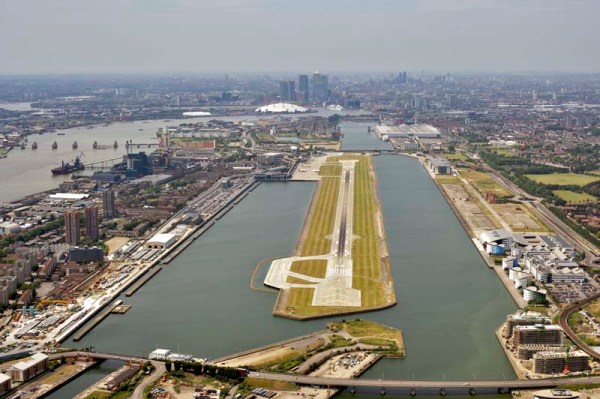
Although cynics said it would never work, British Airways has signed up for a revolutionary biomass-for-jet-fuel process which will power part of its fleet from 2014.
It involves taking the entire bio-jet fuel output of a waste processing plant in London that will use a process developed by the US based Solena Group equivalent to the twice the amount of fossil carbon releasing kerosene it currently uses for its small jet operations out of London City Airport.
While the story has already appeared in the UK media, it misses one remarkably important aspect of Solena’s plans for future non-fossil carbon releasing biomass derived fuels.
And that is to replace the carbon in the fuel stock, in this case waste material that can include shit as well as other organic sources of garbage, with carbon taken from the atmosphere.
This in turn is the crux of problem, to end not just the liberation of excess carbon into the atmosphere from coal, oil and natural gas, but to remove some of it through new energy technology, and thus shorten the time it will take for the atmosphere to lose its overload of the carbon dioxide that regulates the retransmission of heat radiated from the earth’s surface back into space.
This is the goal of many of the programs world wide that seek a viable pathway for algal grown octanes or related processes that would not impinge on agriculture-for-food, which is the major problem with agriculture-for-fuel.
And many of those programs are receiving funds from the serious carbon polluters, the oil and coal companies, which include some that support ratbag denialist lobbies no doubt up until such time as they have stitched up the alternatives.
This is what Solena says by way of summary, but it’s site also links to technical papers which in turn provide the curious with copious references to even more detailed readings.
Taking its bio-energy concept to the next level, Solena creates its own source of biomass by sequestering CO2 emissions. Working in cooperation with Bio Fuel Systems S.A. in Spain, Solena produces micro-algae from CO2 that is then used for plasma gasification technology. The micro-algae are produced in industrial bio-reactors using artificial light to photosynthesize sequestered carbon dioxide to grow the algae. The algae are then gasified to produce electricity. Through Solena’s gasified technology, the result is the production of electricity that is completely emission free.
Note that the London plant Solena is building is not at the stage of taking feed carbons from the air, but from municipal wastes. While that is where it wants to take its technologies, replacement of fossil carbon releasing kerosene with an identical fuel in terms of energy and handling characteristics but made from substantially non fossil carbon releasing waste is the aim of the current process.
The technical notes say:
1. The green fuel will be produced by feeding waste into a patented high temperature gasifier, producing BioSynGas. An established process known as Fischer Tropsch then converts the gas into biofuels to produce biojet fuel and bionaphtha. Bionaphtha is used as a blending component in petrol and also as a feedstock for the petrochemicals industry.
2. The plant will emit oxygen, plus small quantities of nitrogen, argon, steam (water vapour), and CO2. The plant itself will be CO2 neutral. The Fischer Tropsch tail gas can be used to produce 20MW of excess electricity for export to the national grid or converted into steam to be used in a district heating system. The only solid waste product is an inert vitrified slag material, which can be used as an alternative to aggregates used in construction.
British Airways says the modest sized plant will convert 500,000 tonnes of waste per year into 16 million gallons of alternative fuel or the equivalent of taking 48,000 cars a year off the UK roads. This is small, but the processes involved are significant.
The development of aviation grade alternative fuels has moved faster than anyone was predicting five years ago, probably because getting it right will make the various patent holders incredibly rich. The jets BA fuels with alternative kerosene made with ‘shit or whatever’ on their way out of London have to be able to load ordinary fossil carbon releasing kerosene at wherever they land before coming back to London. A number of trials of different types of bio-fuels in recent years, including one containing a substantial fraction of algal grown designer octanes, have proven that this interchangeability can be achieved.








Crikey is committed to hosting lively discussions. Help us keep the conversation useful, interesting and welcoming. We aim to publish comments quickly in the interest of promoting robust conversation, but we’re a small team and we deploy filters to protect against legal risk. Occasionally your comment may be held up while we review, but we’re working as fast as we can to keep the conversation rolling.
The Crikey comment section is members-only content. Please subscribe to leave a comment.
The Crikey comment section is members-only content. Please login to leave a comment.